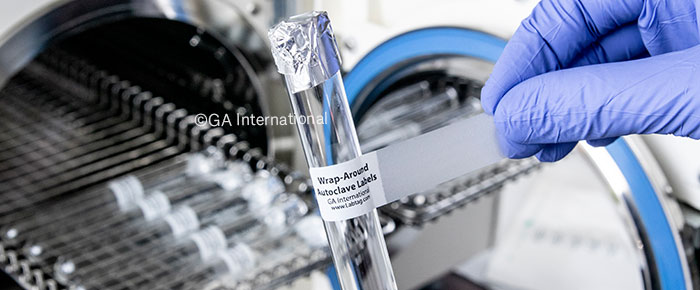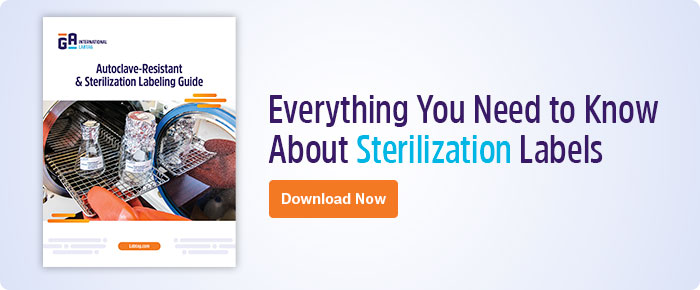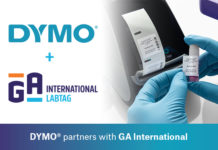
Labs often need to decontaminate, disinfect, or sterilize the material they use to ensure experiments are not contaminated. Which procedure is used depends on the particular experiment and the equipment used.
Choosing the right procedure
Decontamination can render an item or material safe to handle. This reduces the level of microbial contamination enough to assume it is free of infection transmission risk. Sterilization and disinfection are considered forms of decontamination. Sterilization procedures kill all microorganisms, while disinfection merely reduces the level of microbial contamination. There are a number of different sterilization procedures available, while disinfection is typically achieved using chemical agents, such as bleach or ethanol. The choice of sterilization method can also affect the type of sterilization labels used to identify the sterilized material.
Steam autoclave
Using heat to sterilize items is more reliable than most chemical methods; this is the standard method used by most labs to sterilize their equipment and material. As such, steam autoclaving has proven to be the most practical option for the majority of laboratories for both sterilization and decontamination purposes. Steam autoclaving uses high heat and pressure (approximately 15 psi, with a chamber temperature of at least 121°C/250°F) to destroy microorganisms and decontaminate infectious waste quickly. It is recommended that in addition to autoclave labels, chemical indicators, such as autoclave tape, are also used to ensure the cycle has been completed successfully, while biological indicators should be used periodically to conduct sterility monitoring.
Dry heat
Dry heat provides similar results to steam autoclaving but requires higher temperatures and typically takes longer as well. Dry heat sterilization exposes an item to a temperature of approximately 170°C/338°F for an hour. This provides enough time for the elevated heat to kill even the most resistant spores via oxidation of their cellular components. Since it is less efficient than steam sterilization, it is normally only used for hydrophobic items that would otherwise be damaged by moisture, or for equipment that may become corroded. As such, liquids are not compatible with this sterilization method. Dry heat sterilization can be achieved in the lab using hot air ovens, incinerators, microwaves, and Bunsen burners.
Ethylene oxide gas
Ethylene oxide (also known as EtO) gas sterilization is a low temperature gaseous process widely used to sterilize a variety of healthcare products, such as single-use medical devices. Its primary benefits are that it can be used to sterilize equipment and instruments sensitive to moisture and heat and that it can penetrate packaging materials. This is particularly useful when sterilizing delicate plastics and polymers. This sterilization method utilizes 450 to 1200 mg/l of ethylene oxide gas at temperatures of 37°C/98.6°F to 63°C/145.4°F, with a relative humidity of 40% to 80%, for 1 to 6 hours. The primary drawback of EtO sterilization is the toxicity of the gas, which requires the material to undergo an aeration cycle to remove residual ethylene oxide, sometimes taking up to 24 hours. Most autoclave labels will also withstand EtO sterilization procedures.
Gamma irradiation
Gamma irradiation is an option for sterilizing material that does not tolerate heat and pressure, as well as chemical treatments. It is performed by exposing the product to a radiation source, typically Cobalt 60, which emits gamma rays as it decomposes. The rays can penetrate the entire product, making it a useful method for sterilizing packaged goods. Gamma irradiation disrupts DNA and RNA in living organisms and inhibits cell division. It is commonly used by hospitals and laboratory suppliers to sterilize medical devices but can also be used to sterilize foods and agricultural products. This is due to the fact that it kills the bacteria that can cause food poisoning, similar to how heat kills bacteria in cooked food.
Boiling water
A quick and easy method to sterilize or disinfect small instruments and equipment in the lab is to use boiling water. Heating water to a high temperature, 100°C, can kill most pathogenic organisms, particularly viruses and bacteria that cause waterborne diseases. In order for the boiling water to be effective, the item must be immersed in the boiling water for at least 20 minutes. This method is similar to steam autoclaves, as it uses moist heat to sterilize material, but it is not nearly as effective and will not provide 100% sterilization. While it can kill many microorganisms, it is not strong enough to kill heat-resistant bacteria. Boiling water is primarily used to sterilize labware that is regularly reused. Water-resistant labels that can resist boiling water temperatures are recommended.
Ultraviolet light
Ultraviolet light is a disinfection method that utilizes short-wavelength ultraviolet light to kill or inactivate microorganisms by disrupting their DNA and inhibiting their vital cellular functions. This light, with a wavelength of approximately 260 nm, is germicidal and will reduce the number of pathogenic microorganisms present on exposed flat surfaces and in the air. It can complement the disinfection and sterilization processes of autoclaves. However, UV light has poor penetrating power, and even dust may be enough to shield bacteria from the direct exposure required for destruction. UV light can also pose a risk to exposed skin and eyes and should be conducted behind safety glass or while wearing UV protective goggles and gloves in rooms with UV installations. In the lab, UV light is most commonly used to disinfect cell culture hoods at the end of the day, but can also be used to sterilize medical equipment and in operating rooms in hospitals and healthcare facilities.
Chemical disinfectants
Large or fixed items and surfaces may also need to be decontaminated and cannot be subjected to typical sterilization procedures. The use of chemical disinfectants is useful for such situations. However, as liquid chemical disinfectants require extremely high concentrations and several hours of exposure to achieve complete sterilization, they are mainly used for disinfection rather than sterilization purposes. In addition, most chemical disinfectants can be toxic to users, requiring protective gloves, eye protection, and a lab coat worn when handling them, and should only be used according to the manufacturer’s directions for use. No single chemical agent is effective for all disinfection purposes, and different disinfectants should be used according to the application. Some of the more common disinfectants include chlorine compounds (e.g. bleach), iodine preparations, alcohols, hydrogen peroxide, and formalin solutions.
LabTAG by GA International is a leading manufacturer of high-performance specialty labels and a supplier of identification solutions used in research and medical labs as well as healthcare institutions.



